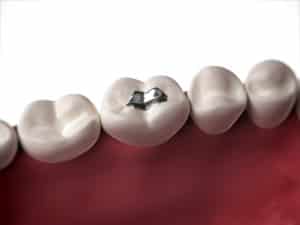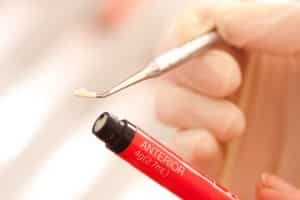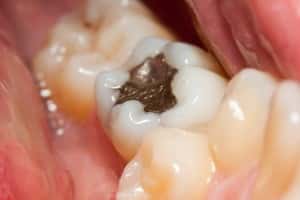 When you open your mouth wide to laugh or yawn do you see fillings? Having fillings is nothing to be ashamed of. In fact it is common. By common that means ninety percent of the population has at least one tooth filled and probably more. Are your fillings composite or amalgam? Do you know the difference? One is white and one is silver. Do you know which one is which? Find out by taking our test Composite vs. Amalgam: How Much Do You Know?
When you open your mouth wide to laugh or yawn do you see fillings? Having fillings is nothing to be ashamed of. In fact it is common. By common that means ninety percent of the population has at least one tooth filled and probably more. Are your fillings composite or amalgam? Do you know the difference? One is white and one is silver. Do you know which one is which? Find out by taking our test Composite vs. Amalgam: How Much Do You Know?
How Much Do You Know About Prophies?
When you were a child did you think a dental cleaning was simply an elaborate teeth whitening? It certainly has an elaborate name. A dental cleaning is called a prohylaxis. Many children probably believe that their dentist is simply brushing their teeth in a fancy way. They like the “tickle toothbrush” which is more fun than their manual one. Do you know what a dental cleaning is for? A dental cleaning can remove some teeth staining but it is not about teeth whitening. Take our quiz below to find out how much you know about prophies.
(more…)
Your Dental Exam Should Include Your Tongue
 Most people think that a dental exam only concerns their teeth. However, a thorough exam should include your tongue. Your tongue can speak volumes (pardon the pun) about your oral and even your overall health. Your tongue is a common place to find oral cancer. Because your dentist looks in your mouth at least twice a year, it stands to reason that he or she would be the perfect practitioner to monitor for oral cancer. That’s why your dental exam should include your tongue.
Most people think that a dental exam only concerns their teeth. However, a thorough exam should include your tongue. Your tongue can speak volumes (pardon the pun) about your oral and even your overall health. Your tongue is a common place to find oral cancer. Because your dentist looks in your mouth at least twice a year, it stands to reason that he or she would be the perfect practitioner to monitor for oral cancer. That’s why your dental exam should include your tongue.
Preventing Future Problems With Preventive Dentistry
 Your dental checkups are important. Maybe when things get too busy, or your finances are tight, you are tempted to skip them or put them off. However, attending your dental checkups every six months helps prevent future–more complicated and expensive–dental problems. Maybe it seems as if your hygienist is not doing much during your appointments, or maybe it’s because he or she is doing too much (scraping, that is!) that you don’t like going, but whatever your hygienist is doing is important to your dental health. Future problems can be prevented with preventive dentistry.
Your dental checkups are important. Maybe when things get too busy, or your finances are tight, you are tempted to skip them or put them off. However, attending your dental checkups every six months helps prevent future–more complicated and expensive–dental problems. Maybe it seems as if your hygienist is not doing much during your appointments, or maybe it’s because he or she is doing too much (scraping, that is!) that you don’t like going, but whatever your hygienist is doing is important to your dental health. Future problems can be prevented with preventive dentistry.
(more…)
Earlier Use Of Fluoride For Children Recommended
Regardless of the fact that the safety of fluoride has been consistently questioned, especially in young children, fluoride has been proven to help fight cavities. Research has also proven fluoride safe and effective for children and adults. Today, tooth decay is on the rise globally and to fight this epidemic the ADA has released a new statement recommending earlier use of fluoride for children.
Zoom! Away Those Stains
 Everybody wants white teeth. When your teeth aren’t white you feel self-conscious smiling. Smiling is important. Not only does smiling make the people around you feel good, it actually releases chemicals in your own brain that make you feel good! Everybody’s teeth could use whitening from time to time if their teeth are stained or yellowed due to extrinsic factors such as what they eat, drink, and if they use tobacco products. If you hesitate to smile because you feel your teeth aren’t as white as they should be. Zoom! away those stains so you can keep on smiling.
Everybody wants white teeth. When your teeth aren’t white you feel self-conscious smiling. Smiling is important. Not only does smiling make the people around you feel good, it actually releases chemicals in your own brain that make you feel good! Everybody’s teeth could use whitening from time to time if their teeth are stained or yellowed due to extrinsic factors such as what they eat, drink, and if they use tobacco products. If you hesitate to smile because you feel your teeth aren’t as white as they should be. Zoom! away those stains so you can keep on smiling.
What Is Gum Contouring?
 Your gums are as much a part of your smile as your teeth. In fact, when it comes to the art of smile design there are various principles that govern it including the ratio of gingival tissue (your gums) to your teeth. If your gums cover too much of your teeth you are considered as having a gummy smile. Gum contouring can correct that. What is gum contouring? Take our true or false quiz below to find out.
Your gums are as much a part of your smile as your teeth. In fact, when it comes to the art of smile design there are various principles that govern it including the ratio of gingival tissue (your gums) to your teeth. If your gums cover too much of your teeth you are considered as having a gummy smile. Gum contouring can correct that. What is gum contouring? Take our true or false quiz below to find out.
(more…)
Chip, Crack, Break…Bond
 Did you know that minor imperfections in your teeth can be fixed using dental bonding? It is a non-invasive, easy, and relatively inexpensive procedure. One or two teeth can be bonded in a one-hour visit. If several teeth are being bonded they may be split into two or more visits. Dental bonding can be used to treat a variety of dental issues. If you have pits, chips, cracks, or breaks ask your dentist about dental bonding.
Did you know that minor imperfections in your teeth can be fixed using dental bonding? It is a non-invasive, easy, and relatively inexpensive procedure. One or two teeth can be bonded in a one-hour visit. If several teeth are being bonded they may be split into two or more visits. Dental bonding can be used to treat a variety of dental issues. If you have pits, chips, cracks, or breaks ask your dentist about dental bonding.
Don’t Women Have Enough Worries?
 Women have their fair share of worries. They worry about their kids, their parents, their partners, their jobs, and now they have to worry about their teeth. Hormonal changes throughout a woman’s life put her at risk for oral health issues including gum disease. How much do you know about how hormonal fluctuations affect your dental health? They probably didn’t cover that in health class did they? Don’t women have enough worries?
Women have their fair share of worries. They worry about their kids, their parents, their partners, their jobs, and now they have to worry about their teeth. Hormonal changes throughout a woman’s life put her at risk for oral health issues including gum disease. How much do you know about how hormonal fluctuations affect your dental health? They probably didn’t cover that in health class did they? Don’t women have enough worries?
(more…)
Placing A Dental Filling
 When you consider that most people have more than one cavity in a lifetime and that there are over 300 million people in the United States, that is a lot of dental fillings. The procedure of placing a dental filling is common, to say the least. It can be quick, easy, and painless. The worst part of receiving a filling is the anticipation, and the sound of the drill. Today we outline the steps associated with placing a dental filling.
When you consider that most people have more than one cavity in a lifetime and that there are over 300 million people in the United States, that is a lot of dental fillings. The procedure of placing a dental filling is common, to say the least. It can be quick, easy, and painless. The worst part of receiving a filling is the anticipation, and the sound of the drill. Today we outline the steps associated with placing a dental filling.









